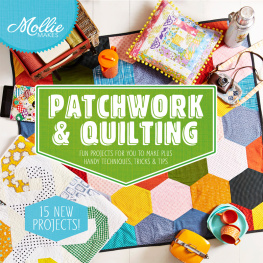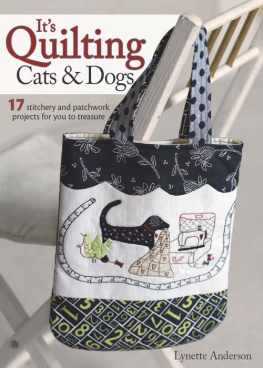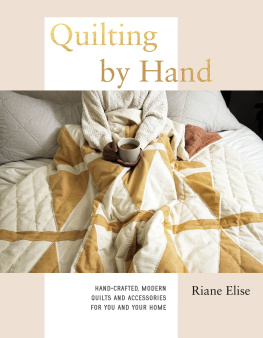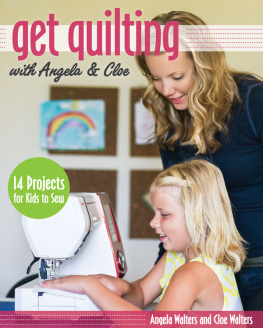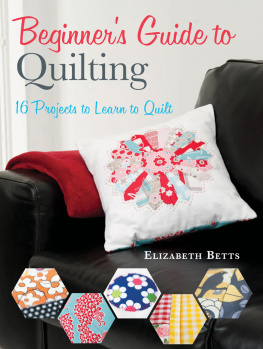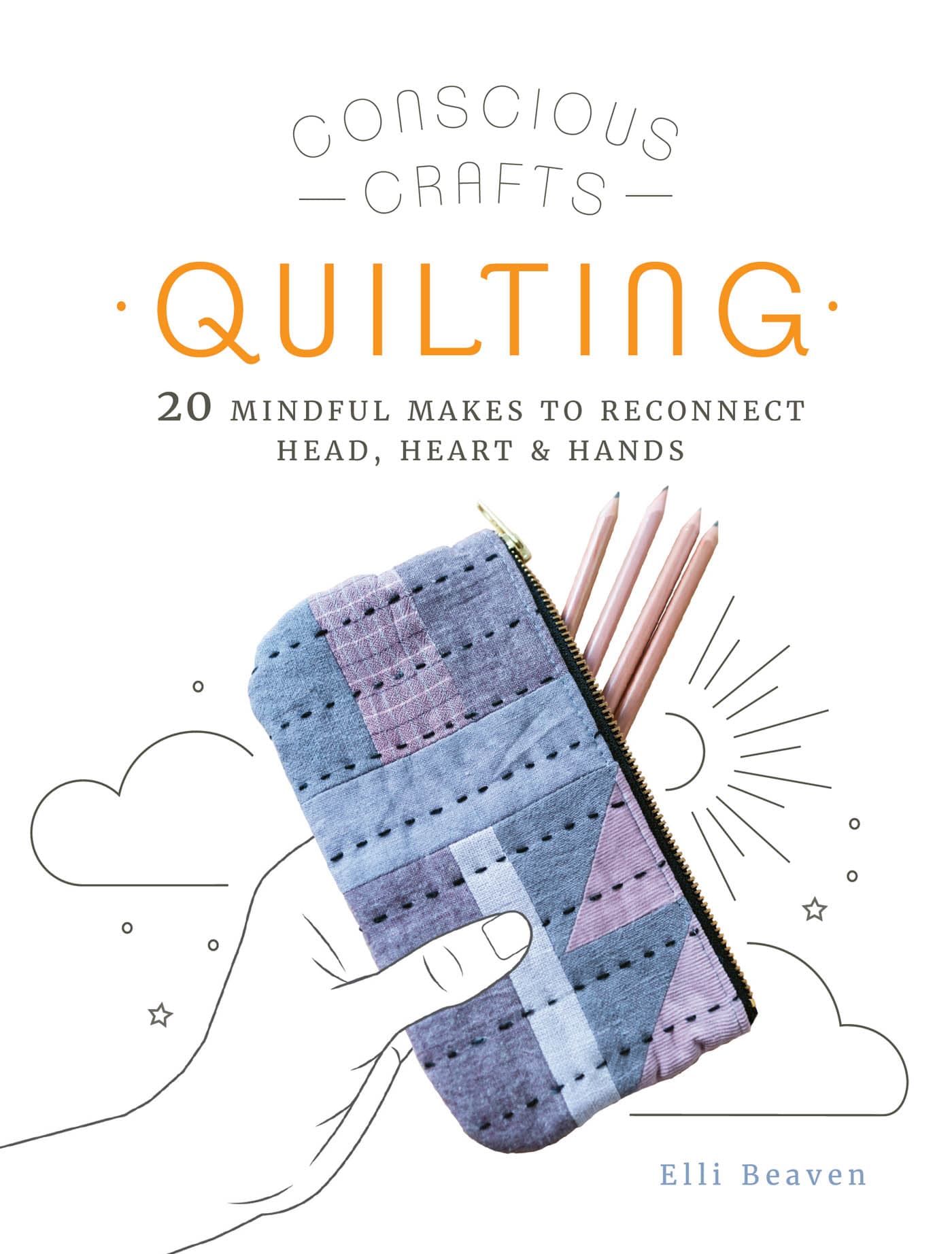Contents
Page List
Guide
Cover
CONSCIOUS
CRAFTS
QUILTING
MINDFUL MAKES TO RECONNECT HEAD, HEART & HANDS
Elli Beaven

contents
introduction
My journey
Mindfulness was not something I was aware of when I started my quilt making journey. I had been given a beautiful quilt for the birth of my daughter and decided I wanted to make one for a friends first baby. I chose fabric, looked up how to make a quilt and dived in. And that was it, I was hooked. I loved all aspects of the process, from choosing fabric combinations to cutting, piecing and quilting. Although I had learnt to sew as a child, I hadnt sewn for years and loved the challenge of figuring it all out. Quilt making was the perfect antidote both to the long hours on the computer writing a PhD and those spent caring for my daughter. Here was something I could focus on, that engaged my creativity and gave me a sense of accomplishment when everything else felt huge and overwhelming. I didnt know it, but quilt making was exactly what my stressed and anxious soul needed to begin to find some peace.
Quilt making soon became my sanctuary and I turned to it whenever I had the chance, trying out new techniques and patterns, taking classes and building up my skills. Initially I was attracted by the bright, bold prints of commercial quilting cottons but increasingly found myself drawn to the subtler qualities of a textile: its weave, feel and above all texture. I also began to question the sustainability of commercially produced cotton. Patchwork and quilting were born from the need to utilise every scrap of precious textiles, whether old garments and housewares or the offcuts produced in the garment making process. In these days of a global climate emergency the textile is industry one of the most polluting in the world. Textile waste in the UK comes in at over 200,000 tonnes per year. I realised there was simply no case for not using the abundance of already existing textiles, rather than encouraging the production of new ones. In so doing, I also fell in love with the multilayered richness and depth that repurposed textiles bring to a quilt, their histories of wear and use overlaying my own narratives of finding, cutting and sewing them. Incorporating repurposed textiles into my work was integral to the journey towards finding my own creative voice as a quilt maker.
Mindful quilt making
When I was at school, my handwork teacher taught me to measure my sewing thread by stretching out my left hand holding the end of the thread and cutting it at the point where it reached my heart. There was a practical reason for this - once looped through the eye of the needle the thread will measure roughly the length of the forearm, enabling efficient stitching with minimal arm movements but more than that it perfectly visualizes the connection of heart and hand that takes place when we fully invest ourselves in creative making. I may not have had much understanding of the concept of mindfulness when I started making quilts, but I absolutely experienced the deeply healing power of connecting heart and hand in the service of creative labour. I kept coming back to quilt making because of how it made me feel, allowing me to release the stresses and noise of the day whilst working creatively to produce a finished item that was both useful and beautiful.
Today I can really appreciate how each part of the quilt making process offers something different. Freeform patchwork is an opportunity to really engage in creative play, experimenting with shape, colour and texture and embracing the raw and imperfect. When I feel energized this is one of my favourite ways to spend time. The methodical process of cutting and piecing squares, on the other hand, is balm to an anxious mind and body when really creative work feels beyond reach. Focusing on this simple repetitive task can really help calm jittery, adrenaline fueled anxiety. Hand quilting is for me the quickest route to finding comfort and quiet. There is something about the feel of the fabrics between my fingers, the weight of the quilt draped over my lap as I stitch that instils a deep sense of calm, no matter the stresses of the day.
This book
Too often we think Im not creative, I cant sew or my work isnt good enough but I hope this book inspires you to dismiss these preconceived ideas. Of course, building skills takes time and practice but anyone can pick up a needle and thread and sew something beautiful and meaningful. Allow yourself some creative playtime, let yourself make mistakes without focusing on the final outcome. Sew for pleasure, finding joy in the pairing of two colours or shapes and the different textures of the fabrics. Take note of what works and what doesnt, what you like and what you dont. Before you know it, you will be making things that you love, that reflect who you are; things that you want to use yourself or give to others.
I actively encourage you to play fast and loose with the patterns in this book. They are made for adapting, for switching binding methods, changing stitching designs, colour placements and sizes. In fact, my primary goal for this book is that in sharing my love of quilt making it encourages and supports your own creative journey; that amongst the projects offered here you find something that kindles your own creative ideas and inspires you to get making.
tools and equipment
Quilting Thread There are many different types of thread available for hand quilting and ultimately which ones you use comes down to personal preference. I would encourage you to try a few different types and see which you prefer.
Thread weights run in reverse order, so the thicker the thread the lower the number. 12, 8 or even 5 weight cotton threads are popular among modern hand quilters, as is Japanese sashiko thread (approximately 5 weight). Standard six-stranded embroidery thread (floss) is usually too thick to get through all the layers of a quilt, but splitting a length into three strands will work fine, if that is what you have available.
Traditional hand quilting thread is a much finer waxed cotton, usually 40 weight. It works well for creating smaller, more precise stitches and for more intricate quilting designs, but does not give the stitch definition and texture that thicker threads do. There are also many different types of silk and linen threads. See what you can find and give it a try youll soon work out what you like best.
Sewing Thread This is generally a 4080 weight thread used for less visible sewing such as piecing or sewing the binding down on the back of a quilt. For piecing, 50 weight cotton is fine, but for bags and pouches I recommend a sturdier standard polyester sew-all thread.
Cutting A rotary cutter, self-healing cutting mat and a couple of quilting rulers will make parts of the quilt-making process quicker and easier but they are by no means essential. The majority of quilting rulers are in inches as this is what the industry works in, though rulers in centimetres can be found. My most used rulers are the 6in (16.5cm) and 12in (30.5cm) squares for trimming blocks and a longer 6 24in (15 61cm) for cutting strips and squaring up quilts. However, there really is nothing to stop you from getting started with just a pair of scissors, an erasable fabric marker and a simple wooden metre ruler. If a pattern calls for the cutting of multiple shapes of a particular size or the blocks need squaring to a specific size, then simply cut a square of card to the correct size, mark around it with an erasable fabric marker and cut along the lines. The same goes for squaring up a whole quilt just use a large square of card and the metre ruler, mark your lines and cut with scissors.



